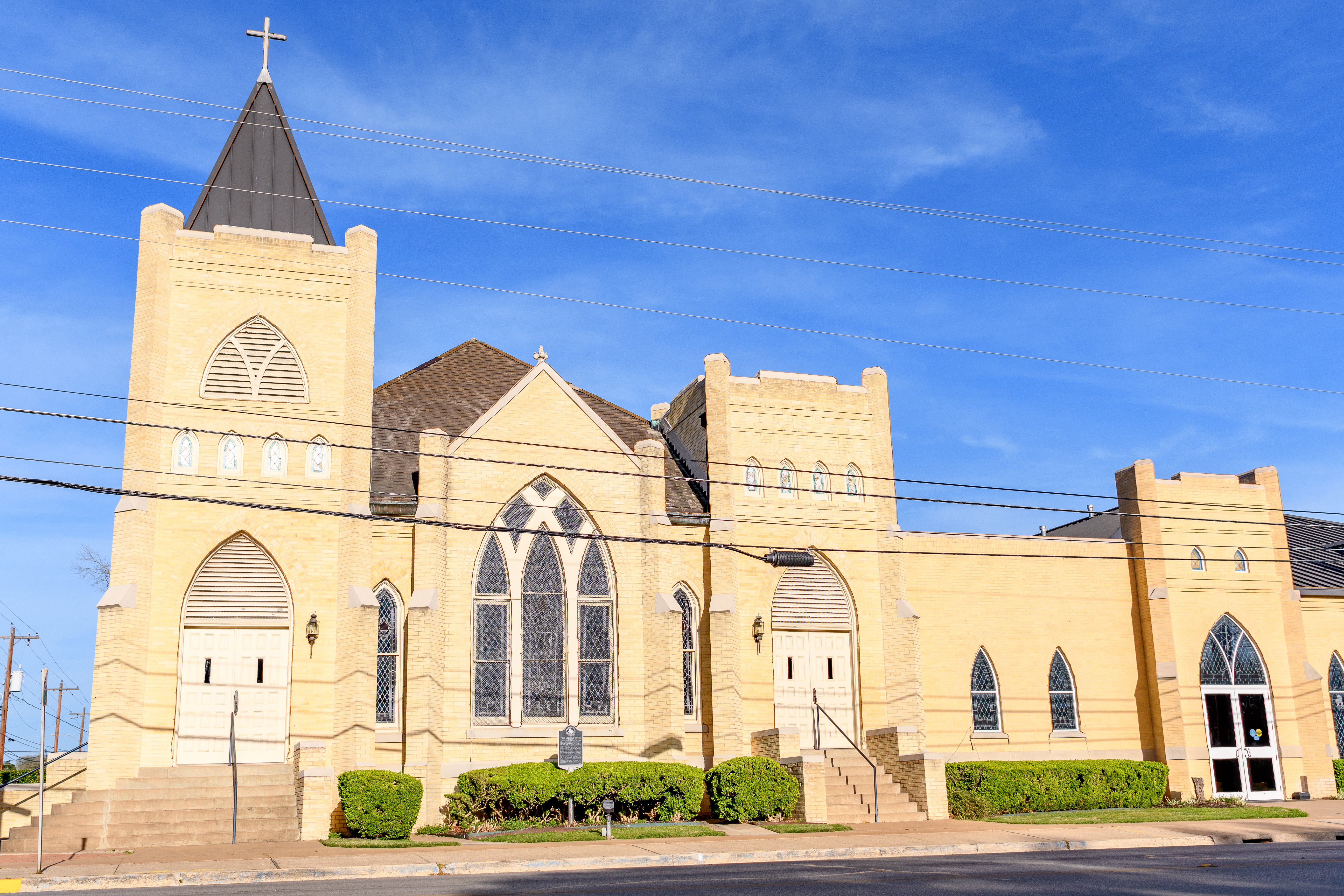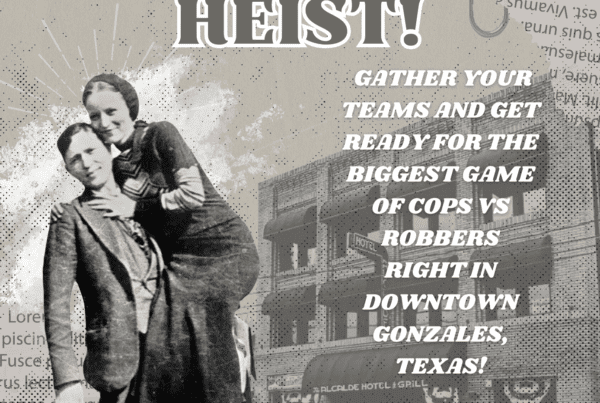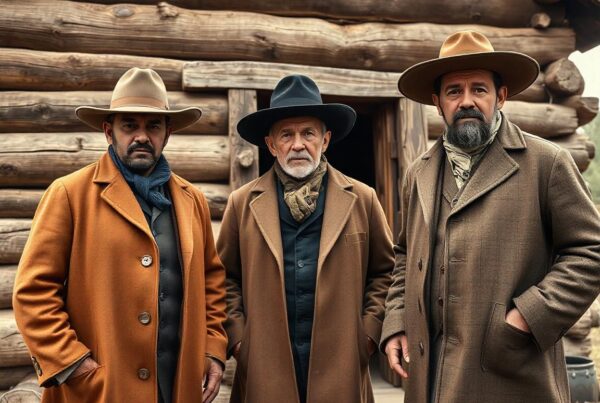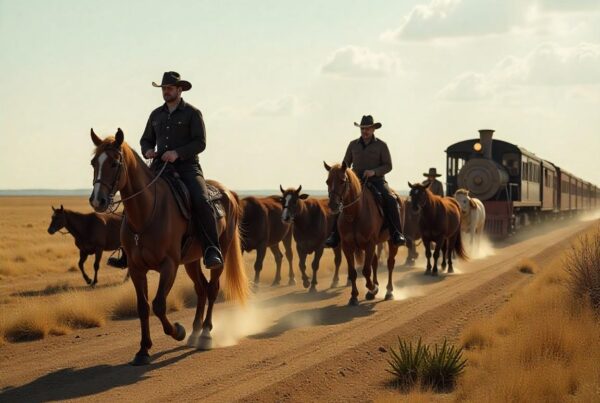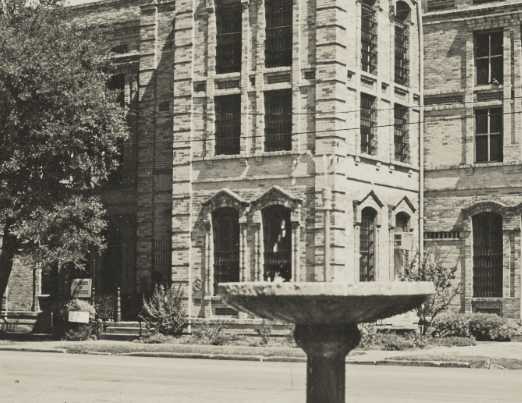Henry Stephenson was one of the earliest pastors to come to the Gonzales area. In 1824, he preached at Peach Creek. In the same year, John Wesley Kenney, one of the pioneers of Methodism in Texas, preached on the Guadalupe River near Gonzales.
The first sermon heard in Gonzales was given by W.P. Smith, a Protestant lay preacher who was later ordained a Methodist minister. He arrived in Gonzales on October 1, 1835, at the time when the colonists were preparing to resist Mexico’s demand for the return of a small brass cannon which had been loaned to them for protection against the Indians. In the general excitement the colonists gathered on the town square where W.P. Smith delivered a rousing speech which is recorded as the first sermon heard in Gonzales.
On October 2, 1835, the first shot from the small brass cannon started the Texas Revolution. The colonists had begun expressing their discontent with the Mexican government and this skirmish created tension between them so war seemed imminent. A Texas army was organized with Sam Houston elected commander-in-chief in March, 1836. W.P. Smith was again present and preached a stirring and patriotic sermon. His pulpit was made of boards placed across two cannons, “The Twin Sisters:, which had been captured in the siege of Bexar. His sermon was from Isaiah 1:19,20. “If ye be willing and obedient, ye shall eat of the good fruit of the land, but if ye refuse and rebel, se shall be devoured by the sword.”
The freedom of Texas was not easily won, for many suffered as the Mexican army advanced on Gonzales after the fall of the Alamo. The colony was abandoned and burned and the colonists fled in what was called “The Runaway Scrape.”
Later the brave and determined people returned to their lands. They still possessed a Christian desire for Bible teaching and for a church. But cabins had to be built and their town rebuilt. The building of a church had to wait.
The plea of the colonists for Christian laborers was heard in the States. In 1836, the General Conference met in Cincinnati Ohio, and, being assured that Texas was no longer a part of Mexico, appointed Martin Ruter superintendent of the Texas Mission.
The Methodist system of using itinerant circuit riders, exhorters, local preachers and class leaders was especially suitable for the needs of the people and their immature state.
The Victoria Circuit was formed in 1840, and Reverend J.P. Sneed was appointed to serve in Port Lavaca, Victoria, Gonzales, and Seguin. In 1841, the Texas Conference was formed and this placed the Victoria Circuit in the Rutersville District. In the same year, 1841, conference records show that Reverend J.P. Sneed organized the Methodist Church at Gonzales. Reverend John Wesley DeVilbiss was appointed to the Victoria Circuit in 1843, and continued with the organization of the Gonzales Methodist Church. He served on Gonzales at that time, and from that time onward Gonzales always had its own minister.
In the meantime, Thomas J. Pilgrim, a school teacher, came to Gonzales in 1840 and taught the young people and others. He formed a Sunday School and taught both Methodists and Baptists. However, when the question of baptism was raised, differences were apparent so the Methodists formed their own Sunday School.
The pastoral address delivered at the 1843 Annual Conference enjoined members to read the scriptures and conduct family prayer; to respect the Sabbath and aid the Sabbath School; to give children a common school education and a knowledge of the higher branches, if convenient; to beware of debt and to avoid tale-bearing; and to be punctual at class and prayer meetings.
A Texas Historical Marker honors the 150th year of organization. The block was designated Church Square in 1832.

